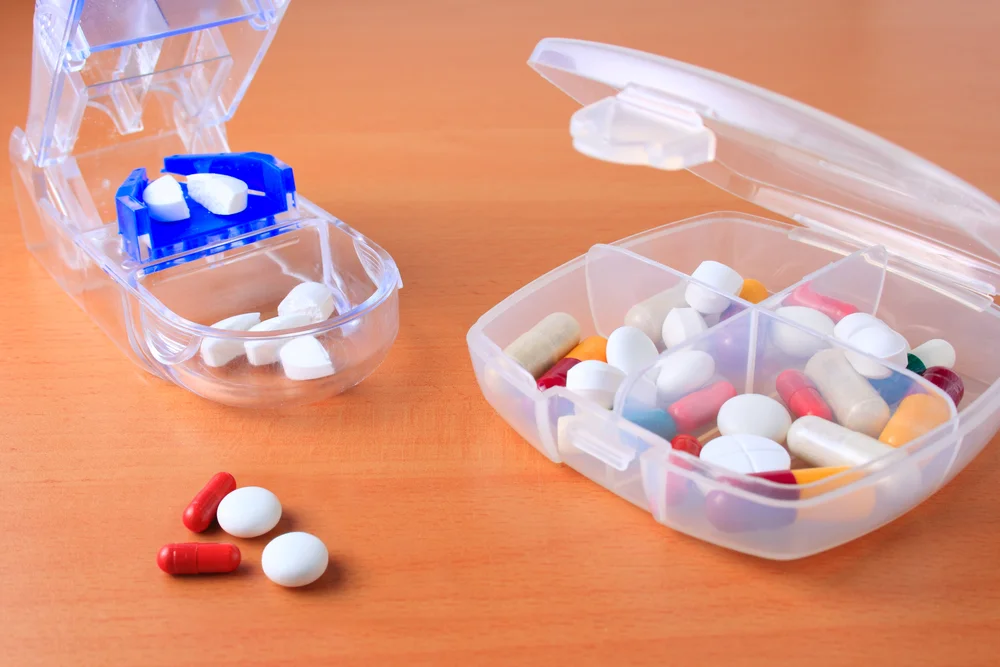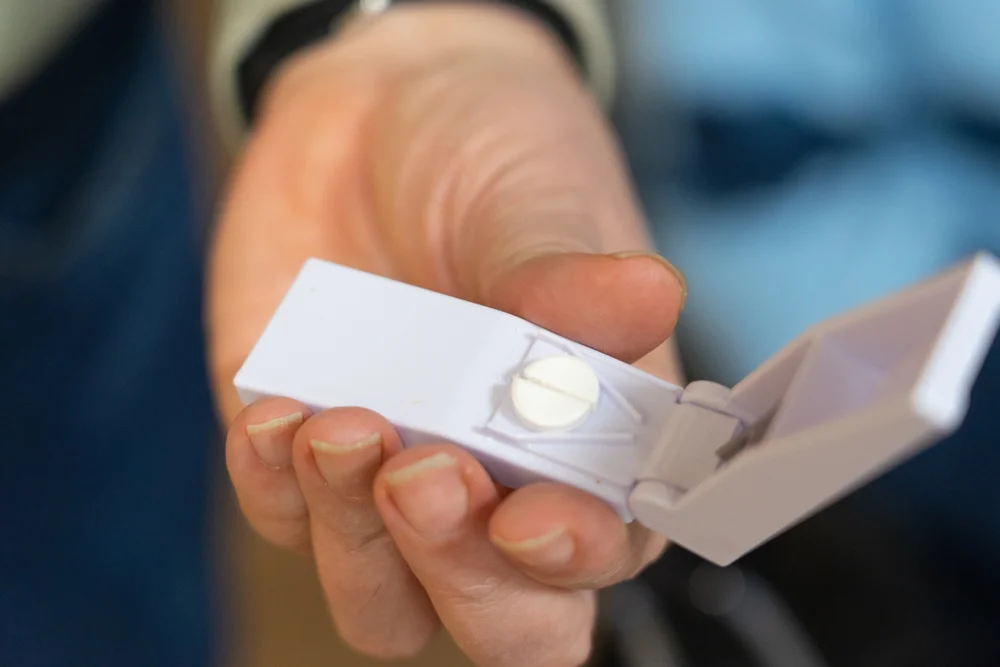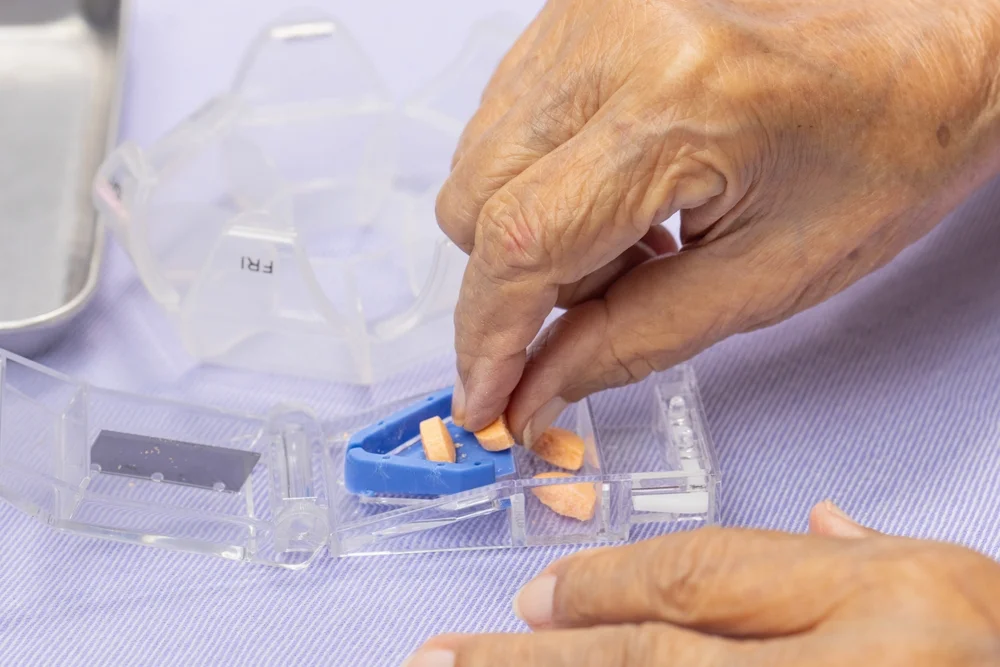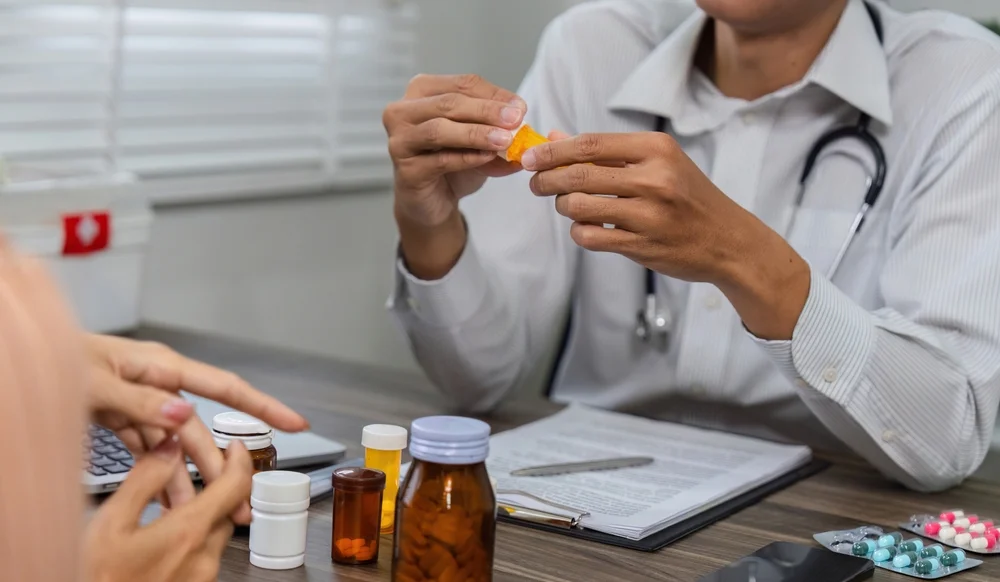Table of Contents
Toggle- Why Does Pill Splitting Work?
- Is Pill Splitting Legal and Safe?
- What Kinds of Pills Can Be Split?
- Pills You Should NEVER Split
- What Could Go Wrong with Pill Splitting?
- How to Split Pills the Right Way
- Tips for Safe Storage and Use of Split Pills
- Talk to Your Doctor First – Always
- Is Pill Splitting the Best Option for You?
- Alternatives to Pill Splitting
Many people are surprised to learn that cutting pills in half can actually help them save money. This practice is called pill splitting, and it’s more common than you might think. It works like this: Instead of buying a lower-dose pill, you buy a higher-dose pill that costs nearly the same, or sometimes even less, and split it in half to get the same dosage.
Why Does Pill Splitting Work?
Pharmaceutical companies often price pills by the type of medication rather than the strength. For example, a 20 mg pill might cost the same as a 40 mg pill. If your doctor prescribes 20 mg, you could get the 40 mg pills and cut them in half. In this way, one pill becomes two doses. This cuts your costs in half without reducing the effectiveness of your treatment.
Here are a few reasons why people choose to split pills:
- Save money on long-term medications
- Stretch insurance benefits or reduce copayments
- Manage supply better when traveling
- Make medication easier to swallow (smaller halves)
Pill splitting has become even more popular as drug prices continue to rise. For people who are uninsured or paying out of pocket, this method can make treatment more affordable.
Is Pill Splitting Legal and Safe?
Yes, but with important conditions. It’s only safe and legal to split pills when:
- The medication is approved for splitting
- You use the correct tool (a pill splitter, not a knife)
- Your doctor or pharmacist agrees
Never start splitting your medication without talking to your doctor first. Some medications are dangerous to split. Others might not work properly if not taken as a whole pill.

What Kinds of Pills Can Be Split?
If you’re thinking about trying pill splitting, the first thing you need to know is which pills are safe to split. Not all tablets can be cut safely, and splitting the wrong kind can cause side effects or reduce the medication’s effectiveness.
Signs That a Pill Might Be OK to Split
Here are a few features that often mean a pill can be split:
- Scored Pills: These have a line down the middle. This is a strong sign that the pill is designed to be split.
- Immediate-Release Formulas: These pills work all at once, not over a period of time. They are usually safer to split.
- Tablets (Not Capsules): Solid tablets can be split. Capsules cannot.
Here are some types of medications that are often safe to split (always confirm with a healthcare professional):
| Medication Type | Examples |
| Cholesterol-lowering drugs | Simvastatin, Atorvastatin |
| Blood pressure meds | Atenolol, Metoprolol |
| Antidepressants | Sertraline, Citalopram |
| Allergy meds | Loratadine (in tablet form) |
| Some anti-anxiety meds | Diazepam (Valium) |
These medications don’t lose their effectiveness when cut, and they don’t contain coatings that change how they’re absorbed.
Pills You Should NEVER Split
Some pills are dangerous or ineffective if split. These tablets have special coatings, time-release features, or combinations of drugs that should stay intact.
Warning Signs: Do Not Split These Pills
- Enteric-coated pills: These are covered in a special coating to protect your stomach. Splitting them destroys this layer.
- Extended-release or time-release medications: These are made to release slowly in your body. If you cut them, you might get too much at once.
- Combination drugs: Some pills contain more than one type of medicine in specific proportions. Cutting them can upset this balance.
- Capsules: These usually contain powder or gel and should not be opened unless advised by a pharmacist.
Common Medications That Should Not Be Split
| Medication Type | Examples |
| Painkillers (time-release) | OxyContin, Tramadol ER |
| Antidepressants (slow-release) | Venlafaxine XR, Bupropion SR |
| Diabetes medications | Metformin ER |
| Heart medications | Digoxin, Diltiazem (extended-release) |
| Birth control pills | Most oral contraceptives |
Always ask your doctor or pharmacist if you’re unsure about your medication. Taking a split pill that shouldn’t be split can lead to serious health problems, including overdose, treatment failure, or stomach issues.
What Could Go Wrong with Pill Splitting?
Although pill splitting can save money, it’s not risk-free. Mistakes during splitting or misunderstanding how a medication works can cause real problems.
Risks Involved
- Uneven Dosage – Some pills crumble or break unevenly. This means you might take too much or too little of the drug.
- Loss of Medication – Cutting a pill can sometimes lead to small pieces breaking off and getting lost. This may reduce the actual dose you’re taking.
- Changes in Effectiveness – Some medications are sensitive to light or air once split. Their effectiveness may reduce if not taken right away.
- Wrong Pills Being Split – If you mistakenly split a time-release or coated pill, the results can be dangerous.
- Patient Confusion – Especially for older adults or people with memory problems, managing half-pills can become confusing and result in dosing errors.

How to Split Pills the Right Way
If you and your doctor have decided that pill splitting is safe for your situation, the next step is learning how to do it correctly. A clean and accurate split is important to ensure you get the right dose every time.
Use the Right Tool
Never use your fingers, a knife, or scissors to split pills. These tools are not designed for precision and can cause the pill to break unevenly or crumble. The best option is to use a pill splitter, a small device made specifically for this purpose. You can buy one at most pharmacies or online, and they’re very affordable.
Steps to Split a Pill Safely
- Read the Label: Make sure the medication is safe to split. Look for a score line or check with your pharmacist.
- Use a Pill Splitter: Place the pill in the splitter following the instructions on the device.
- Press Down Firmly and Evenly: This helps you get two clean halves with minimal crumbling.
- Take the Right Half: If your doctor says to take half a pill, make sure you’re only taking one of the two halves, don’t take both by accident.
- Store the Other Half Properly: Keep the unused half in a dry, clean container away from light and moisture.
When to Split
Ideally, split pills just before you need them. This keeps the medication as fresh and effective as possible. Some people choose to split a week’s worth in advance and store the halves in a pill organizer.
Tips for Safe Storage and Use of Split Pills
After splitting pills, it’s important to store and manage them correctly. Mishandling split pills can lead to loss of medication, confusion, or even taking the wrong dose.
Storage Guidelines
- Keep in Original Packaging When Possible: This helps you identify the pill easily and refer back to the dosage if needed.
- Use a Labeled Pill Organizer: Mark the days of the week so you don’t forget if you’ve taken your dose.
- Avoid Humidity: Do not store pills in bathrooms or near sinks. Humidity can ruin some medications.
- Keep Away from Children and Pets: Store your medications in a safe place that is out of reach.
Handling Tips
- If your medication crumbles or doesn’t split cleanly, don’t take the pieces. Ask your pharmacist what to do.
- Never combine different pills in the same container unless instructed.
- If the pill looks or smells different after splitting, do not take it and contact your pharmacist.
Talk to Your Doctor First – Always
This cannot be stressed enough, never split pills without asking your doctor or pharmacist first. Even if you think the pill looks safe to cut, there may be reasons why you shouldn’t. Your doctor can help you:
- Decide if pill splitting is right for your medication
- Choose the correct dosage and strength
- Show you how to do it safely
- Monitor any side effects or changes in how the medicine works
Your pharmacist can also give you advice about:
- Whether a generic alternative is available that’s already the right dose
- Which medications in your prescription list can or cannot be split
- How to use a pill cutter
Is Pill Splitting the Best Option for You?
For some people, splitting pills makes perfect sense. For others, it can cause more problems than it solves. Here’s how to know if it may work for you.
Good Candidates for Pill Splitting
- People taking long-term medications like blood pressure or cholesterol drugs
- Patients with stable, consistent dosages
- Individuals trying to cut prescription costs
- Patients who find it easier to swallow smaller pieces
Not Ideal for Everyone
Pill splitting may not be a good idea if:
- Your dosage needs change often
- You have vision issues or arthritis, making it hard to split accurately
- You take complex or multiple medications
- Your pill doesn’t have a score line or contains special coatings
Sometimes it’s better to ask your doctor for a lower-strength version or switch to a cheaper generic drug rather than splitting.

Alternatives to Pill Splitting
While pill splitting can be effective, there are other ways to save money on medications that don’t involve cutting tablets.
Other Cost-Saving Options
- Generic Medications: Always ask if there is a generic form of your drug. They are often much cheaper and just as effective.
- Prescription Discount Programs: Look into savings cards and discount programs like GoodRx.
- Buy in Bulk: Ask your doctor if you can get a 90-day supply instead of 30 days.
- Shop Around: Prices vary between pharmacies. Use price comparison websites or apps to find the best deal.
- Online Pharmacies: Verified online pharmacies often offer better prices. Make sure they are licensed and safe.
- Assistance Programs: Many pharmaceutical companies have assistance programs for people with limited income.
Be Smart, Be Safe
Pill splitting can be a helpful way to cut down on medication costs, but only if it’s done safely and under medical supervision. Always check with your healthcare provider before splitting any pills. Use a proper pill splitter, follow safe storage practices, and don’t take chances with your health.
Here’s a quick summary to remember:
- Only split pills that are safe and approved for splitting
- Use a pill splitter, not a knife or scissors
- Split pills just before use, or store them properly
- Consult your doctor and pharmacist regularly
Saving money is important, but staying healthy is even more important. With the right approach, you can do both.






